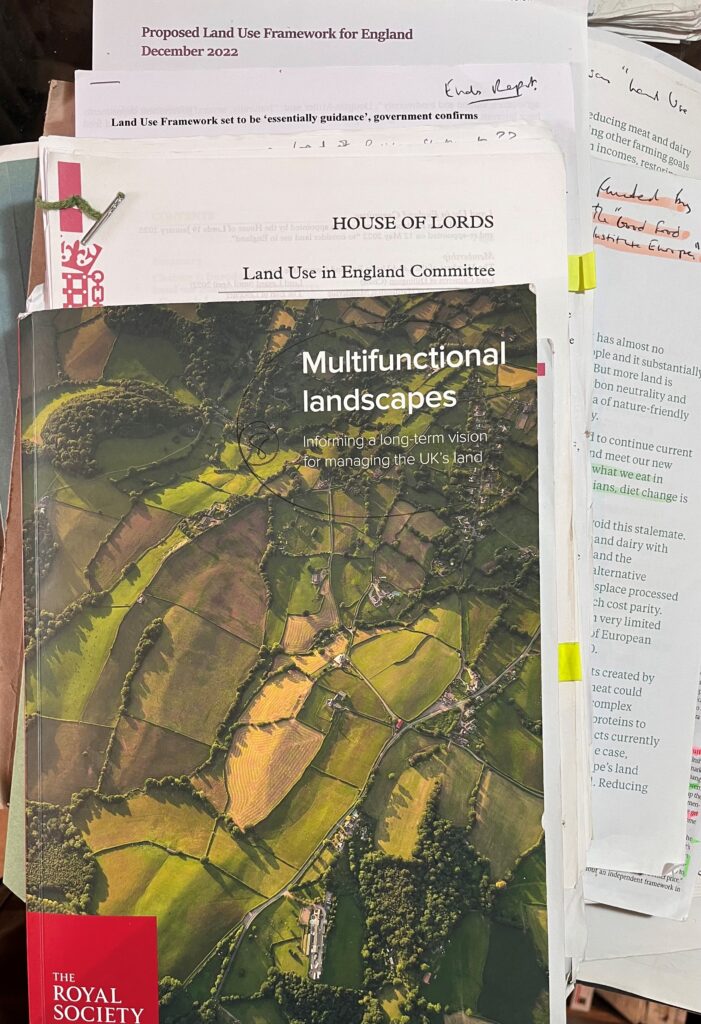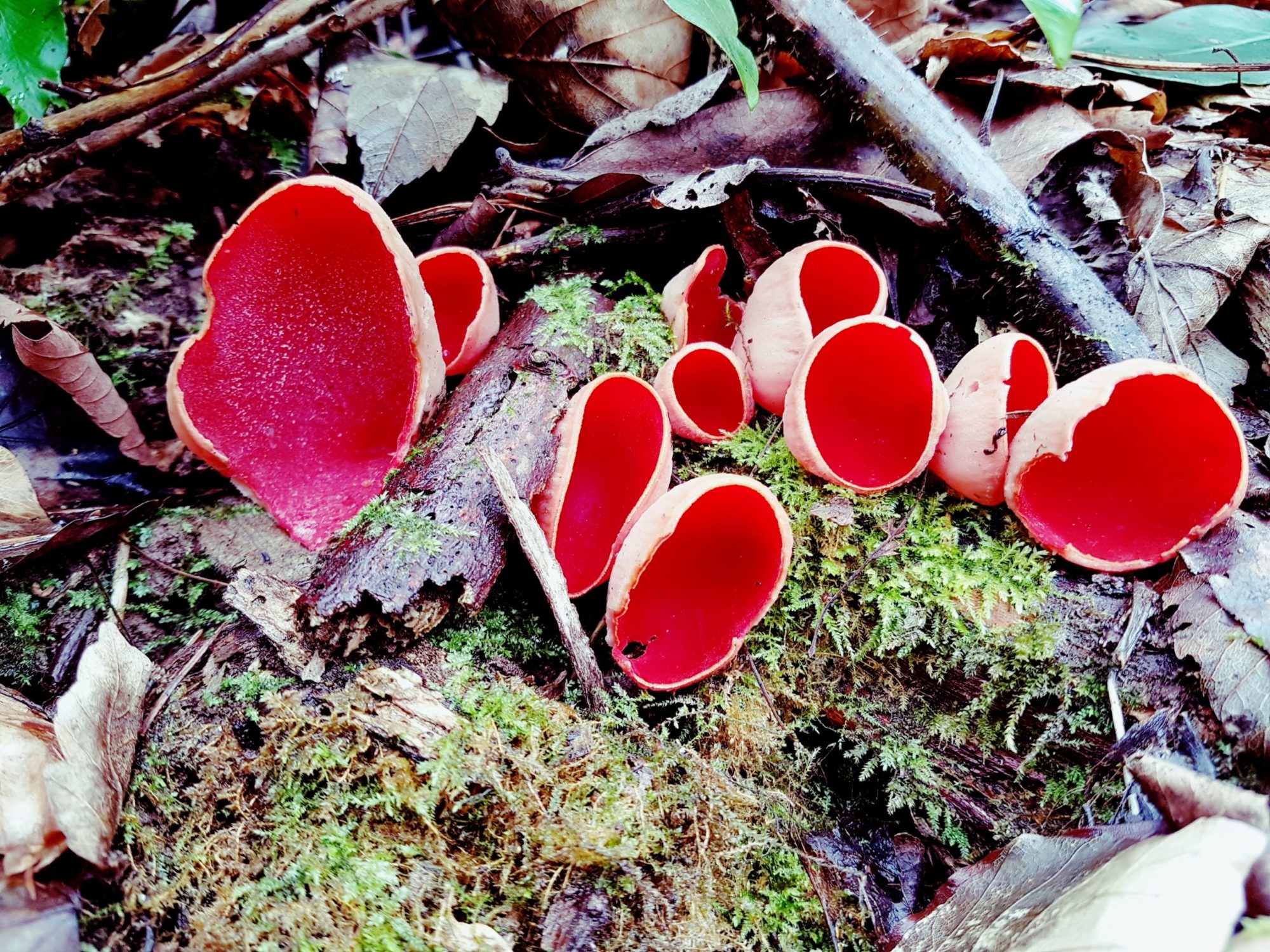In a short two-part conversation with Professor Sir Charles Godfray, Part 2 is about land use, farming, food, sharing/sparing and trade-offs.
Part 1 is about the role of scientists as honest brokers/advocates and scientific research around environmental issues.
This is a lightly edited version from a transcript of a recording from our meeting in Oxford in January 2023 and all the links/refs/pictures are the sole responsibility of myself.
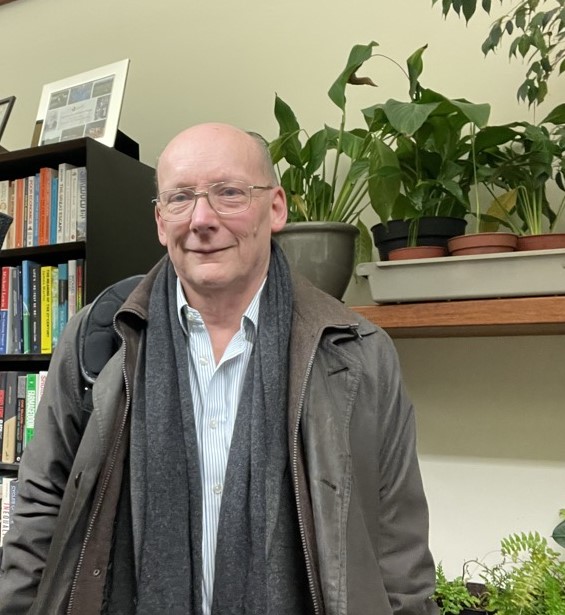
RY: I am aware you have completed a report on multifunctional landscapes: how does that fit with a long-mooted land use framework?
CG: Our Royal Society report on Multifunctional landscapes concluded that a land use framework is a good idea. Our report is trying to be helpful, rather than prescriptive, to outline some of the principles which might make a land use strategy work on the ground. The House of Lords report also recommends a land use strategy, and quite appropriately for parliamentarians, it also talks more about how its structure could be set up.
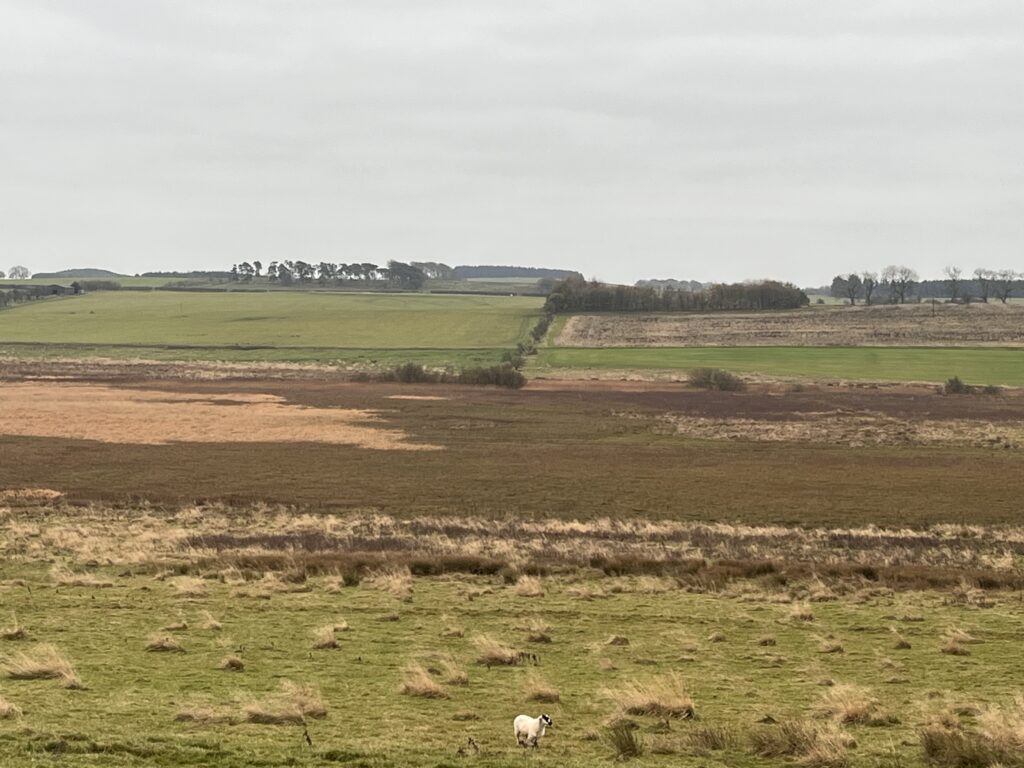
RY: We might have to decide between different biodiversity – say trade-offs between farmland and woodland nature – would better metrics help?
CG: Metrics are hard. But one of the main reasons the Royal Society and House of Lords reports both recommend a land use framework, is we must get down to considering trade-offs as part of making hard decisions. While, increasingly, there are analytical methods to help us try and understand how we can get multiple goods from the landscape.
And yes, you are right, there are ineluctable trade-offs. There is farmland biodiversity, maximised from having low-input farmland, and non-farmland biodiversity which does not exist on farmland but which you get from creating ‘natural’ habitats such as marshland or woodland.
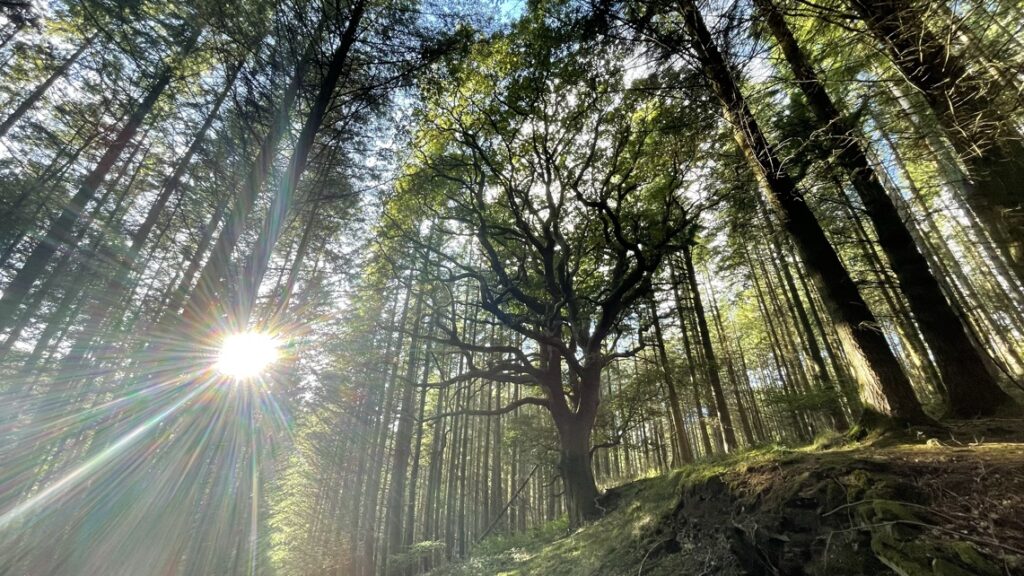
Land choices
RY: With a crowded farmland dominated isle, can we have it all?
CG: I think we need to be asking some difficult questions about what we want from farming. A conservative estimate is that we will need 30% more food globally by mid-century, though I suspect it is more likely to be 50%. So, what should the UK do in the face of that increased demand for food?
I think there are three separate arguments one could make:
- (1) we are a high-tech country with one of the most efficient agricultures in the world. Could it be even more efficient, and should it contribute to meeting that increased global demand.
- (2) we are a country with a relatively stable population – should we continue our current rate of food production, neither increasing or decreasing it.
- (3) we are one of the most ‘biodiversity-depleted’ countries in the world, should we de-intensify our farming, produce less food, and seek to increase our biodiversity.
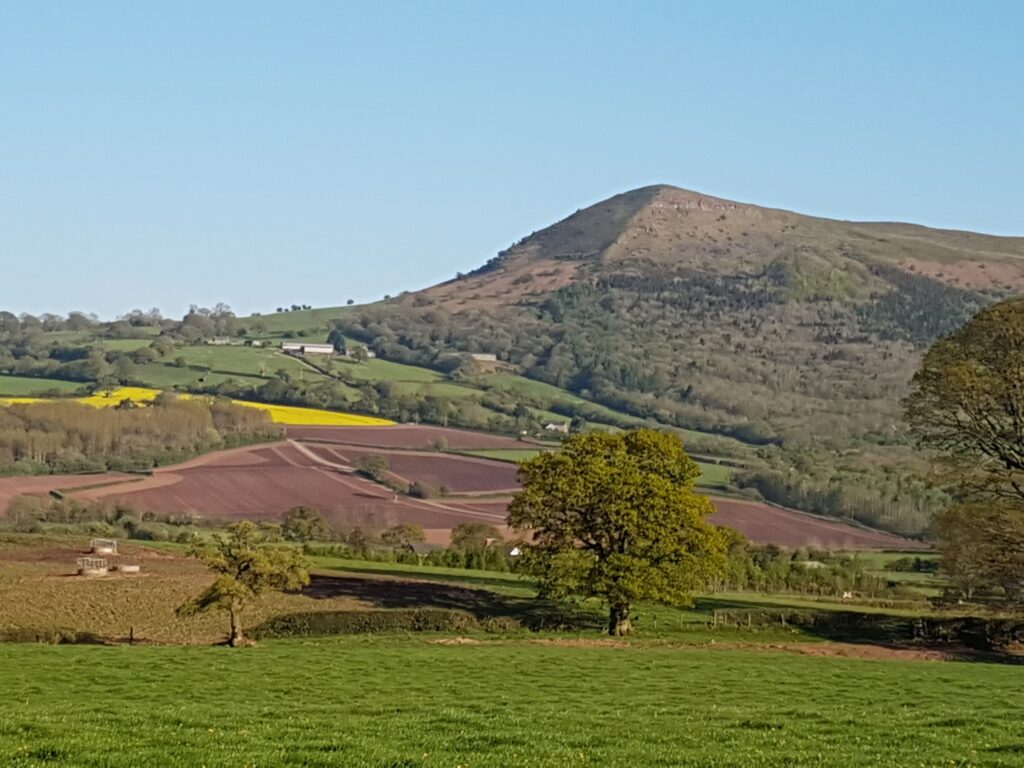
RY: Who is weighing up these arguments?
CG: The government – and there are caveats along the way. If they want to de-intensify (3), they must work out from where our food is going to come from. It is not good enough to say more is going to be produced in ‘factory farms’ – though I do think there will be a bit of that – but that essentially more food will come with imports.
If we are going to increase domestic food production (1), then we are going to have to square that with our commitments for biodiversity, carbon, ecosystem services, natural capital etc.
From the previous government’s response to the Food Strategy Plan, it would seem to date to be continuing on the current trajectory (2).
Meaty planetary issues
RY: I sense this discussion is linked to society’s dietary changes; seemingly an unpalatable matter for any government to tell people how to eat?
CG: Yes, and as part of this inevitably we are going to have to eat less meat [especially red] and that is going to affect the farming industry.
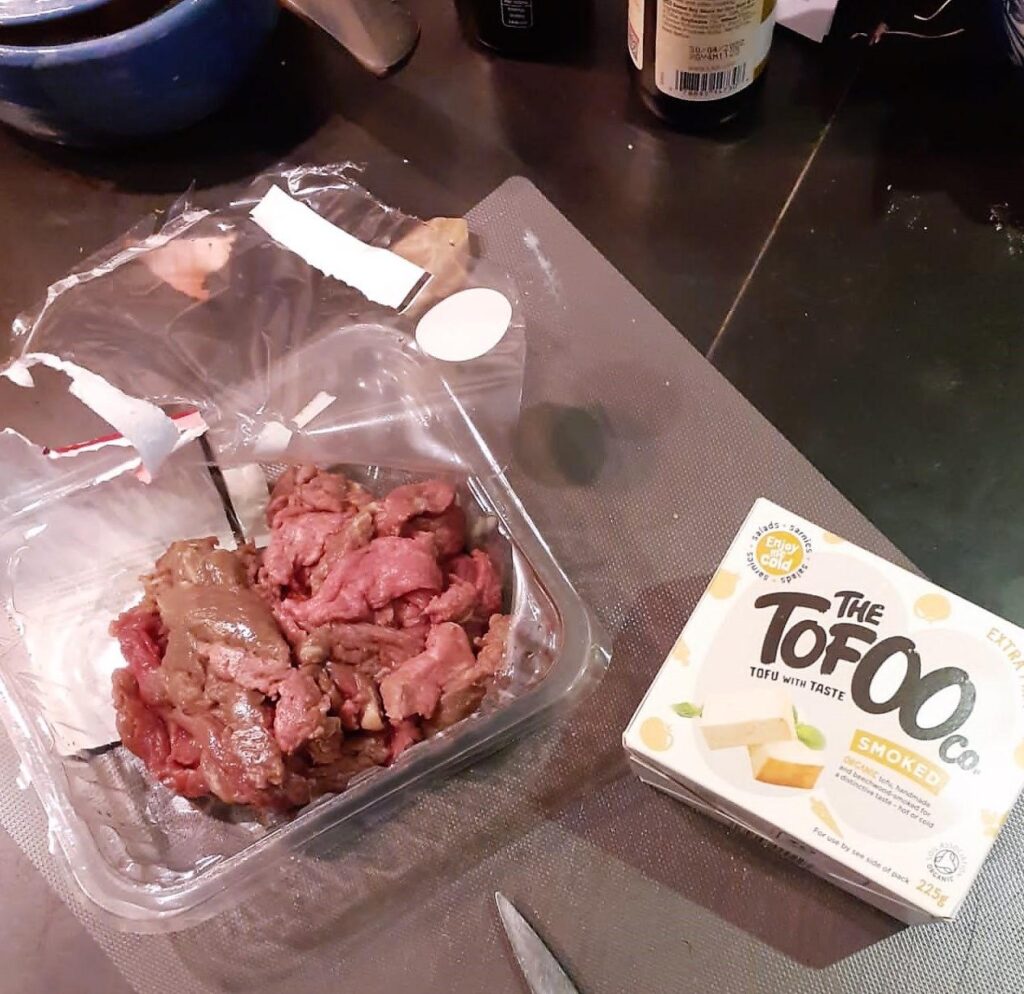
RY: You are referring to ‘eat 30% less meat’ out of The National Food Strategy (Dimbleby’s report)?
CG: Yes, and some would argue that that is an underestimate. Another issue is that the [farming] industry hasn’t appreciated the amount of investment and innovation going into meat and dairy substitutes. It is far from certain, but if I was to bet, I would say in ten years’ time most of the processed meat in sausages, patties and things like that would come from non-traditional sources. So, I think that is going to be a genuine disruption of the livestock industry and I worry a bit that it has, to a certain extent, its head in the sand at the moment.
Boggy Fens
RY: Land use is not just about livestock, it might also include rewetting lowland peat farmland to provide public benefit from carbon sequestration?
CG: I would rather agree with that.
It is very important how you frame it. All land must be ‘productive’, but now not only in terms of food, fibre and fuel, but also in terms of ecosystem services public goods. So, if land is to ‘produce’ biodiversity, you must ensure it is good for biodiversity in the first place. And arguably the same applies to food production.
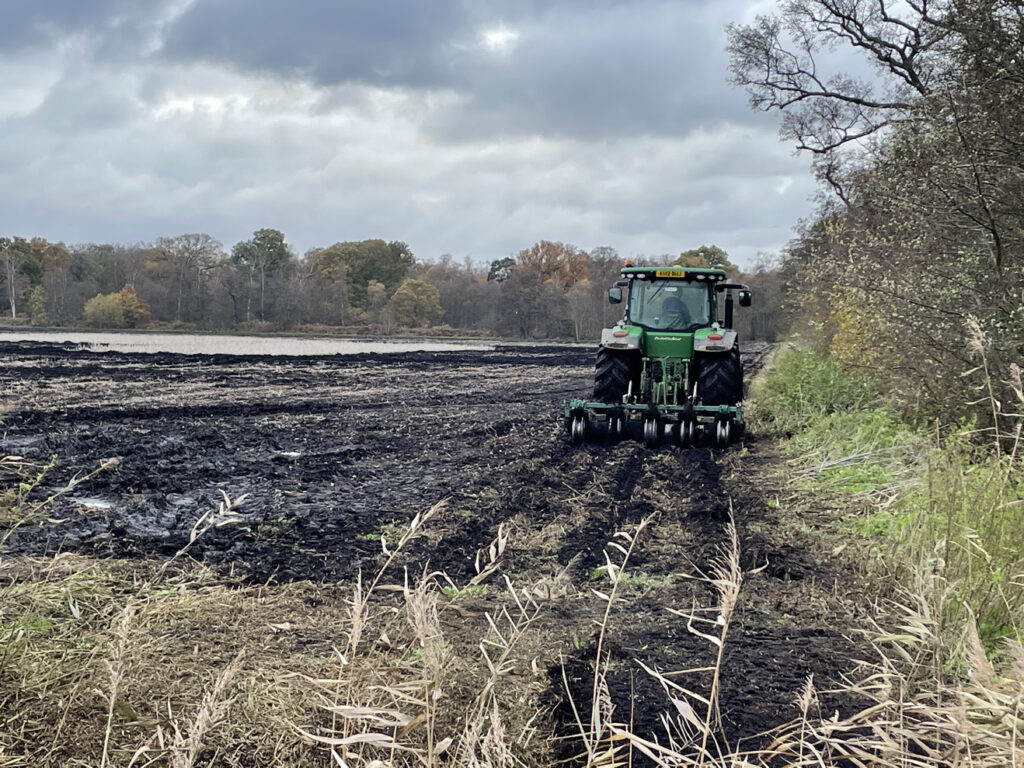
Trade-off land uses
RY: This might bring us to ideas around ‘land sharing and sparing’ – how do you view these issues?
The Food Strategy, under Chapter 10 and Recommendation 9, proposed the ‘Three compartment model’ (page 96 of The Plan). This built on from work by Professor Andrew Balmford and views the three compartments as a continuum of different land uses at both farm and landscape scale. At the sparing end of the continuum it includes some land out of farming, as that is the only way we are going to restore substantial biodiversity and head towards net zero by 2050.
My slight concern about some of the sharing arguments is that by seeking to share land everywhere, you do not get the best biodiversity and you do not get the best food production.
RY: Would a land use framework assist land managers in optimising land use?
CG: Once you are clear about what you want to do, and considering the trade-offs, you ineluctably get to something that is not sharing land for both food and nature everywhere.
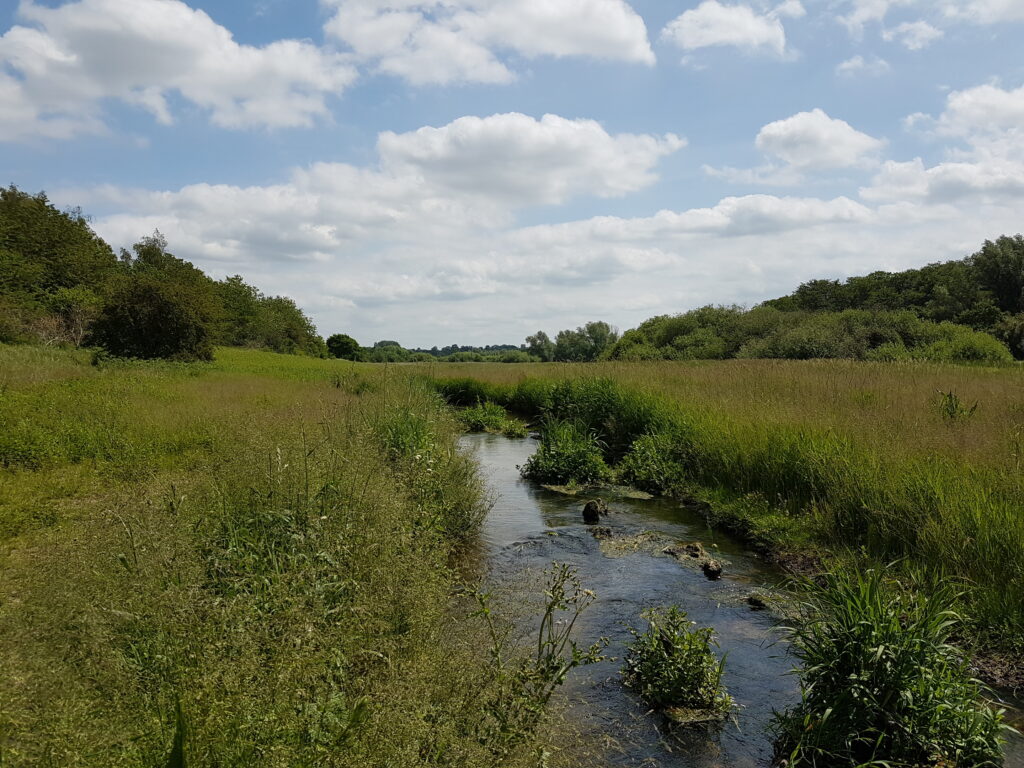
If you think that the UK has only got a tiny percentage of unmodified habitat now, taking a relatively small amount of land out of agriculture could substantially increase our biodiversity and carbon storage.
RY: And the current farm spending?
CG: This is about keeping people on the land providing different outcomes. My view is that with circa £3 billion we currently spend on farming support, this is reallocated for producing public goods across the shared (with nature) and spared (for nature) continuum of land use. The suitable land managed chiefly for food production gets very little public payments, whereas on other land where you take a hit on yield to increase other output/functions, public funding is increased.

RY: A new role for some farmers?
CG: It would mean a different way of thinking for farmers, not only as producers of food, but as stewards of the land and producers of other land-based environmental products.
END of Part 2 (part 1 here)
addendum: links added Dec 24: latest Food Security Report 2024 (Dec 24), Farming Stats (Sept 24) and NY Times article on ‘factory farming’
further reading and links
- other land use framework discussion documents/briefings – here | here | here | here | here | here – launch due 31/1/25
- further reading – “Sustainable agriculture and food systems; comparing contrasting and contested versions“ with more links to related topics covered in my science portal here
- my interviews with Prof Tim Benton (on related issues), Prof David Hughes and others
